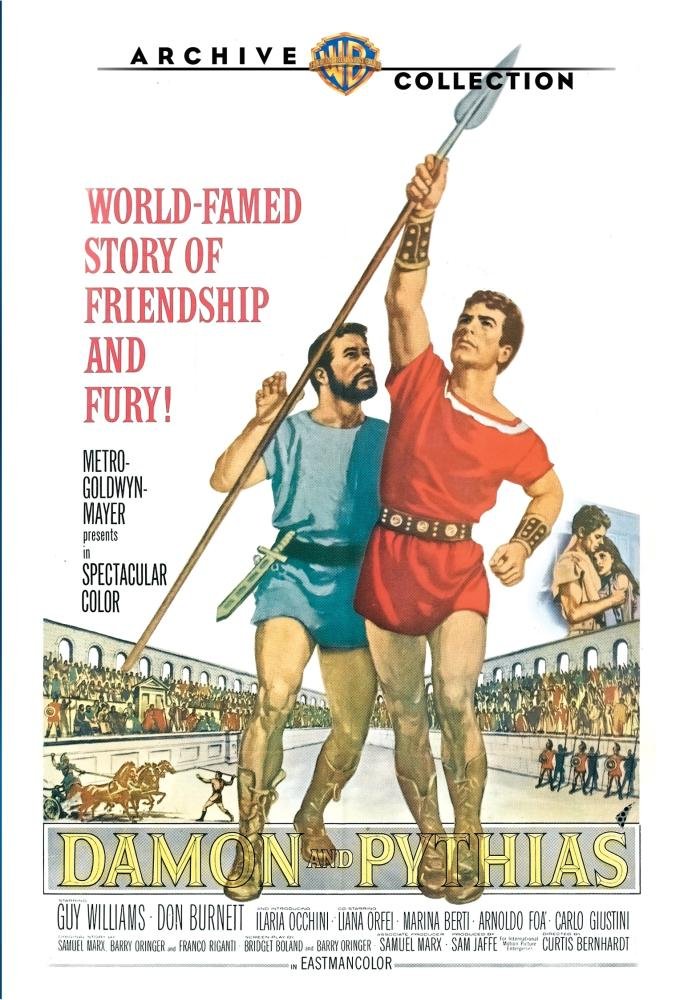
The film genre was called “Swords and Sandals,” and it was quite popular, for a while at least. I guess modern versions would include Gladiator (2000) or maybe 300 (2007). But the golden age of these movies was in the late ’50s and early ’60s. Damon and Pythias (1962) may not be an epic on the scale of Ben-Hur (1959) or Spartacus (1960), but it is certainly a highly entertaining new release from the Warner Archive Collection.
The film begins with a card informing us that the story starts 400 years before the birth of Christ. It is during the time of Dionysius the Tyrant, who ruled Syracuse in ancient Greece. Damon (Guy Williams) will do anything for a buck, or in this case, a gold coin. He rats out an illegal meeting of his fellow followers of Pythagoras – to Dionysius’ henchmen in the opening scene. He then races to tell the Pythagorans (for another gold coin) that their meeting is about to be rudely interrupted. Following this display of double-crossing, he meets Pythias (Don Burnett), yet another follower of Pythagoras.
Pythias is looking for a room to rent for the night, and Damon (with a couple of fellow thieves) lead him down a blind alley to rob him. When they are chased by soldiers, Damon and Pythias form an unlikely bond. From the very beginning, Pythias is presented as a noble, moral man. I guess this rubs off on Damon during their escape, and the two become friends.
When Pythias is accused of plotting against Dionysius, he is sentenced to death. With his wife very sick, and pregnant at home, Pythias pleads to be allowed to return for a short time to help her. Naturally, Dionysius does not believe Pythias will return. But Damon steps up and offers himself as something of a substitute, or hostage – so that if Pythias does not return, Damon will be the one executed.
The logic and order that Pythagoras represented was a direct threat to the tyranny of Dionysius. With this situation, Dionysius sees a unique opportunity to discredit the followers of Pythagoras. He accepts the trade while quietly ordering his soldiers to kill Pythias if he does attempt to return. To Dionysius, this seemingly disloyal conduct by Pythias should kill off any popularity of the Pythagoran followers once and for all. What he does not anticipate however is the townspeople’s protection of Pythias when he does go back. The Greeks knew how to tell a story, and Pythias’ triumphant return occurs just moments before Damon was to be executed.
Faced with this situation, Dionysus relents, and both men are allowed to go free. Like many Greek fables, the moral of this story is very simple. It is about the bonds of friendship and loyalty. Damon and Pythias was an Italian/American production, very obviously filmed on location. I imagine that most of the ancient buildings were recreated for the film, but they are impressive, even on what looks to have been a relatively small budget.
As previously mentioned, Damon and Pythias is part of the Warner Archive Collection, and contains no extras. But it sure is fun to have access to this highly enjoyable film on DVD.